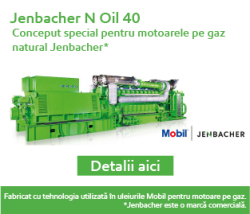Vehicle fleet management trends for 2017
 Vehicle fleet management trends for 2017
Vehicle fleet management trends for 2017
Managing a vehicle fleet is a complex activity that involves ensuring the success and profitability of the business, but also compliance with safety standards for drivers. Integration of modern technologies in the safety, monitoring and efficiency systems of the vehicles in a fleet makes transportation safer and more profitable.
People who work behind the wheel are never completely safe, which is why automotive engineers keep focusing in 2017 on designing advanced systems to detect and avoid hazards.
See below which are the most important trends of 2017 in terms of options, special equipment, facilities and policies to help you effectively manage your vehicle fleet.
1. Traffic safety - remains a priority for carriers
Large vehicles, such as trucks, are exposed to greater dangers than small cars. In case of an accident, the driver’s safety is endangered, and material damages reach hefty amounts.
According to a World Bank report, the economic cost of road accidents in Romania exceeds $ 4 billion annually. These costs include coverage of health services, loss of productivity and the repair or replacement of vehicles.
Therefore, ignoring safety rules is extremely costly for a company owning a vehicle fleet.
In 2017, specialists recommend that carriers keep focusing on the investment in technologies encouraging:
- Wearing the seat belt at all times
- Traffic video monitoring from the inside of the vehicle
- Prudent driving, with no distractions
- Prevention of aggressive driving
- Sending reports on driver safety by an administrator
2. Development of new technologies, such as advanced telematic systems
Road traffic monitoring cannot be achieved with an accuracy of 100% from afar, which is why cues from manufacturers show that in 2017 the development of the latest generation technologies will continue, including:
- Integration of advanced GPS systems;
- Integration of systems for monitoring fueling;
- Access to Google Street View in real time during the entire transport;
- Integration of planning systems for work and rest hours;
- Use of smart watches for monitoring sleep and driving hours.
Regarding new technologies, vehicle fleet managers who are interested in the purchase of new commercial vehicles will notice that some models already integrate smart monitors which analyze even engine oil quality.
3. Encouraging preventive maintenance
Ignoring certain mandatory preventive maintenance processes often leads to sudden failures, downtime, loss of productivity and delayed delivery activities. Telematic technologies can also solve such problems.
By monitoring the service life of the engine, such integrated systems can inform the fleet manager about preventive or critical maintenance actions, such as the oil change or the change of certain key parts.
In 2017, the focus will be on ELDs (Electronic Logging Devices), which are able to connect to a vehicle’s engine, record the activity and inactivity hours, display reports and statuses and transmit these data via the Internet, USB or Bluetooth. Thus, in 2017, it will be possible to replace many of the analogue devices or the tachographs used so far by the drivers of commercial vehicles with advanced systems with high accuracy.
In addition, you must keep in mind that in the period 2017-2018, the European Union aims to impose the existence of smart tachographs in all trucks.
Consider the above three trends in 2017 to effectively manage your vehicle fleet. Meanwhile, make sure to use high quality engine oils for an excellent performance of the commercial vehicles, like those from the Mobil Delvac 1 range.
For more information about the proper and effective use of the lubricants for the commercial vehicle fleet, please click on the image below and contact a Star Lubricants representative who can provide you with the needed information.







